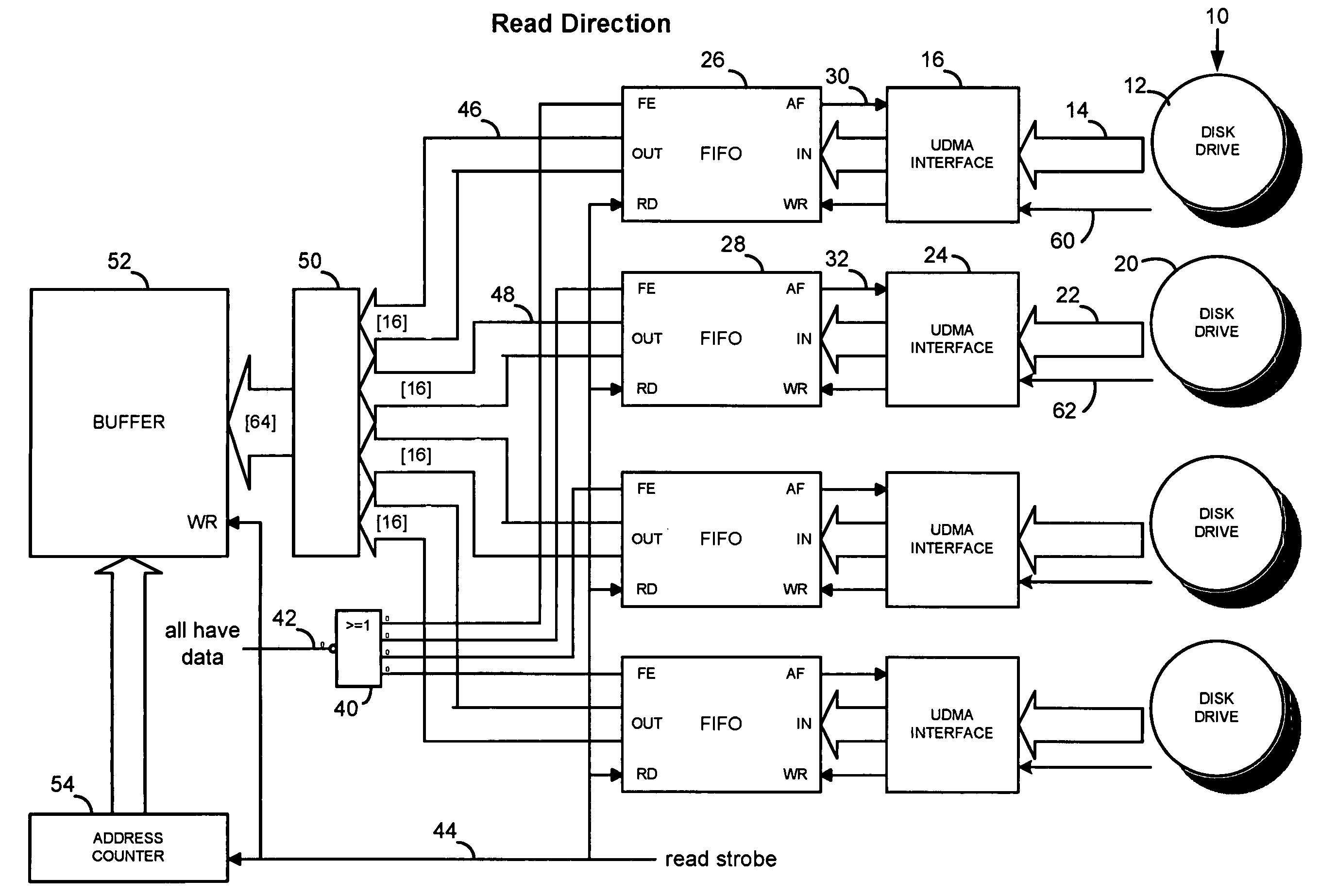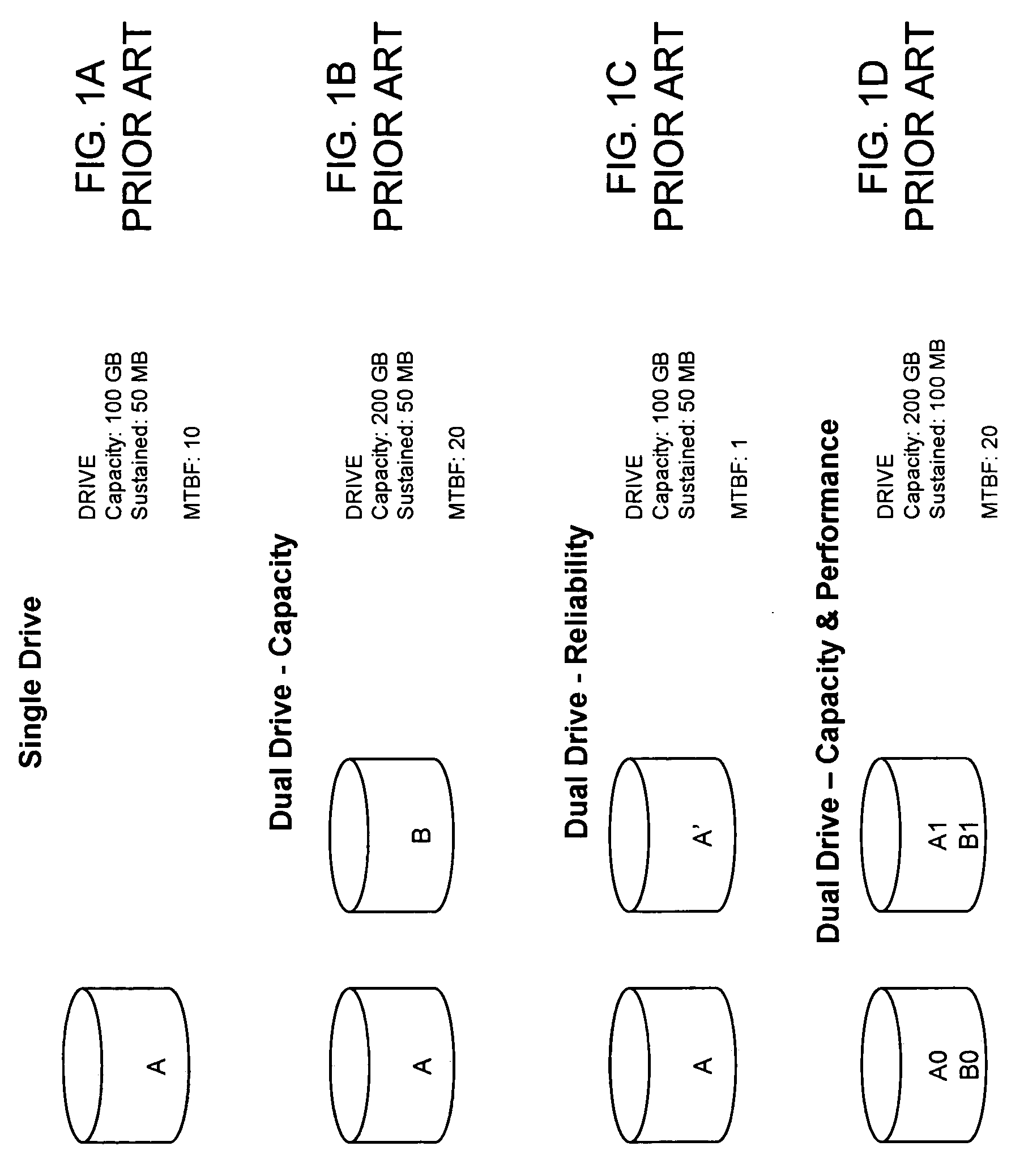Disk controller methods and apparatus with improved striping, redundancy operations and interfaces
a disk array controller and striping technology, applied in the field of raid disk array controllers, can solve the problems of limited data transfer rate, low probability of data loss, limited hard disk performance, etc., and achieve the effect of reducing buffer requirements, improving performance, and reducing hardware complexity
- Summary
- Abstract
- Description
- Claims
- Application Information
AI Technical Summary
Benefits of technology
Problems solved by technology
Method used
Image
Examples
Embodiment Construction
I. RAID Controllers and the UDMA Disk Drive Interface.
[0087] It is useful to create synchronous data transfers in a disk controller where the actual data transfers to and from the disk drives are asynchronous. That is, for some interfaces and protocols, the disk transfer operations are paced not by the disk controller, but by the individual drive electronics, and each drive completes its part of a given operation, for example a read or write of striped data, at a different time. The availability of synchronous data transfers enables “on the fly” generation of redundancy information (in the disk write direction) and “on the fly” regeneration of missing data in the read direction (in the event of a disk failure).
[0088] This can be done by placing an elastic buffer, i.e. a FIFO, into the data path of each of the drives and the controller. This strategy is illustrated with the case of a UDMA interface, although it can be used in any application where a data strobe originates at the dat...
PUM
 Login to View More
Login to View More Abstract
Description
Claims
Application Information
 Login to View More
Login to View More - R&D
- Intellectual Property
- Life Sciences
- Materials
- Tech Scout
- Unparalleled Data Quality
- Higher Quality Content
- 60% Fewer Hallucinations
Browse by: Latest US Patents, China's latest patents, Technical Efficacy Thesaurus, Application Domain, Technology Topic, Popular Technical Reports.
© 2025 PatSnap. All rights reserved.Legal|Privacy policy|Modern Slavery Act Transparency Statement|Sitemap|About US| Contact US: help@patsnap.com



